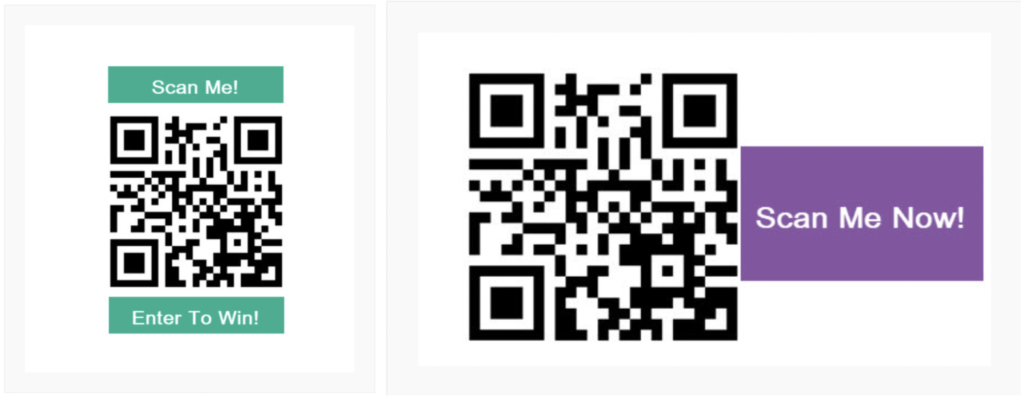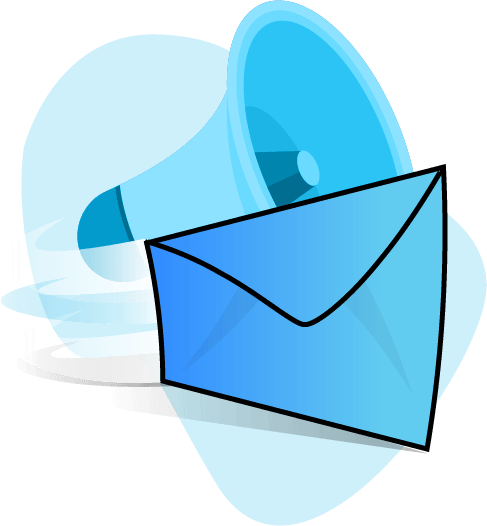When you mention lead nurturing, most marketers immediately think of email. Automated drip sequences have long been the go-to method for staying in touch with prospects and encouraging them to progress in a sales process. There’s only one problem with this approach — well, really about a hundred and twenty problems. That’s about the average number of emails received by a typical office worker IN ONE DAY! Just getting prospects to notice your message in their inboxes is a problem for marketers. That’s why lead nurturing with direct mail is a growing trend among in-the-know marketers.

Relying on an email-only lead nurturing approach is dangerous. Prospects find it easy to unsubscribe, block, or ignore emails, even if their avoidance measures have nothing to do with how they feel about your organization or your products. They may be overwhelmed with emails and simply stop paying attention because of the mess in their inbox. Still, the lure of easy set-up and ultra-cheap production inspires marketers to concentrate their lead nurturing strategies in only the email channel.
“Postalytics allows users to manage direct mail in a way that reduces excess sends and saves time. Integrating Postalytics into marketing automation workflows allows for personalized, multi-touch campaigns to specific audiences that blind mailings would not be able to achieve.”

– Jon Pierotti, Graphic Designer, Zogics Inc.
But what if your lead nurturing messages could compete with two or three messages a day instead of hundreds? Would it be worth it to generate something that had a much higher chance of being opened and read? Direct mail has those advantages.
Many marketers don’t know they can set up and administer a lead nurturing campaign based on direct mail with little more effort than required for those well-loved email sequences. Thanks to Postalytics, direct mail has never been easier. If you can set up an email drip campaign, you can run a direct mail lead nurturing sequence with Postalytics.
You can even use direct mail if your primary email channel ceases to become productive for reaching individual prospects. You could, for example, enroll any prospect who unsubscribed from your email list in a direct mail-driven lead nurturing campaign and continue exposing them to your brand.
Here’s a great article that describes the difference between email and direct mail as communication channels for your business: https://www.postalytics.com/blog/direct-mail-vs-email/
Why Bother Lead Nurturing With Direct Mail?
We all know that leads don’t automatically become sales. It just doesn’t work that way. In fact, only a percentage of leads become qualified, and very few of the qualified leads ever make a purchase from you.
Sometimes a lead makes no purchase at all, but other times they buy from a competitor — perhaps someone who has done a better job at staying top-of-mind and providing the messaging, information, and offers that guide a lead towards a purchase decision. An effective lead nurturing strategy makes sure that doesn’t happen to you.
Lead nurturing improves your odds. Companies with a comprehensive lead nurturing strategy generate 50% more sales-ready leads than companies that do nothing. Lots of time and money goes into attracting leads. Letting them languish after acquisition, hoping they will decide on their own to take the next step, is wasteful.
Even though lead nurturing is relatively easy, not everyone does it. A few years ago, DemandGen did a study that showed only 29% of the brands they surveyed nurtured customers beyond the initial sale. That presents lots of opportunity. Chances are good that your competitors aren’t doing a great job at lead nurturing. If you include lead nurturing as part of your marketing plan, you’ll have a huge advantage.
As research from Aberdeen revealed, lead nurturing pays. They found that targeting prospects with content relevant to their position in the buying process yielded 72% higher conversion rates.
Lead nurturing is a big opportunity and using the mail as part of the process makes it even more likely to produce the results you want.
Check out this article about B2B lead nurturing: https://www.postalytics.com/blog/b2b-lead-nurturing/
Most of the work you do to design an email nurturing sequence will be exactly the same for the direct mail variety. Here are the steps:
Identify the Audience and Segment the List

The best lead nurturing efforts are rarely generic. Take the information you have about your prospects and use it to communicate with them more effectively. Age, gender, and geographic location are common segmentation data points. For B2B sales, you might segment based on industry or job titles. Hubspot claims that leads nurtured with targeted content result in a 20% increase in sales opportunities.
Each group has different interests and pain points. Address these differences by adjusting the content of your lead nurturing messages. A software company might highlight the compatibility and maintenance ease of their product to CTOs but focus on money saving aspects of their software in their messages to CFOs, for example.
Define the Sales Process
Companies sometimes skip this step. They may have never stopped to analyze the steps prospects take before they become buyers, but this information is quite important. In all but the simplest products, shoppers take interim actions after they become aware of a product, but before they buy. Identifying those intervening actions tells you what content to deliver as part of your lead nurturing strategy.
If almost all your buyers see a demonstration before they commit to a purchase, you should aim your nurturing materials at getting them to see the demo. If they usually ask for input from others, then directing leads to customer testimonials or case studies would be part of your strategy. Design your lead nurturing campaigns to encourage leads to take the next steps, whatever they may be.
You might have to interview some of your present customers or examine CRM data to find out what path they followed before they bought.
Determine the Contact Schedule

How long is the typical buying process? When prospects make purchase decisions quickly, then your schedule of lead nurturing contacts will be short and compact. If it takes months before a prospect makes a purchase decision, you will elongate the schedule. The goal is to contact individuals often enough to stay top-of-mind and retain brand awareness, but not so often that the messaging becomes a nuisance and prospects ignore your communications.
Lead nurturing works through repetition. Estimates vary, but most experts agree it takes an average of over six “touches” before a prospect responds. Continuing to send direct mail and digital messages on a consistent schedule helps prospects retain information and associate your brand with quality service and products.
Personalize the Content
Your leads are people, even if you sell to businesses. People like to be recognized, appreciated, and treated as individuals. The days of the “Dear Customer” letters are long gone — or they should be. With technology available today, personalized letters, postcards, and emails are easy to do.
Personalization doesn’t always mean displaying data explicitly. Information you have about an individual allows systems like Postalytics to alter the graphics or text to best align with the profile of each individual buyer. You wouldn’t want to try selling products to people living in Boston using photos of folks wearing New York Yankees hats, or feature pictures of convertibles cruising the Miami waterfront to car buyers in Iowa.
Use buying history, credit ratings, or other demographic data to subtly alter messages, offers, and images to match the profiles of individual prospects.
Define the Triggers
Triggers are powerful tools for marketers as they design their lead nurturing campaigns. Some triggers are time-oriented, such as birthdays or renewal dates. Others might be related to actions. When a prospect downloads a white paper, for instance, it indicates they have reached a new level in the buying process. That can be a trigger.
Triggers cause something to happen. Perhaps you will send a birthday greeting or a reminder about renewing a subscription. Triggers can even cause a CRM system to switch a prospect from one lead nurturing sequence to another. The topic of a downloaded white paper chosen by a prospect, for example, may indicate interest in a specific product line. With this information, marketers can send subsequent lead nurturing materials that focus more heavily on the relevant products.
See how Postalytics does triggered direct mail:
https://support.postalytics.com/support/solutions/articles/70000622438-direct-mail-campaigns
Decide on Your Calls to Action

Every piece of content included in a lead nurturing strategy should include a call to action. The whole point of lead nurturing is to encourage prospects to take that next step that brings them closer to making a purchase.
Most of these steps will not be “talk to a salesperson”. If you have analyzed your sales process as we recommended, you’ll know what actions your lead nurturing content should promote. Perhaps it’s watching a video or subscribing to a newsletter. Maybe it’s entering a contest where you require prospects to register and provide more information you can use to market to them more effectively in future communiqués.
How prospects react to a call to action tells you something about where they are in the sales process. If you offer something like a demonstration or a white paper and prospects decline, they are still near the top of the funnel. They are not ready yet to proceed to next steps, so your strategy is to continue with brand awareness and thought leadership content. Keep including the offer occasionally until they respond. If they accept the offer, then you’ll know they are moving closer to a purchase decision and you can adjust your strategy accordingly.
Develop the Landing Pages
Most times, a call to action involves visiting a landing page on your website. Before you design the communications that will be part of your lead nurturing campaigns, we recommend developing the landing pages. Pre-designed landing pages makes the nurturing campaign construction process smoother. With the landing pages already established, you can create compelling offers and include consistent branding elements in your direct mail or digitally delivered lead nurturing messages.
You can even personalize the landing pages, using the same variables and dynamic content blocks as your direct mail creative. Here’s how: https://support.postalytics.com/support/solutions/articles/70000600604-landing-page-personalization-options
Decide on the Channels
Though direct mail is exceptionally efficient, nurturing campaigns are most productive when they use both digital and physical means to transmit information. Technologies such as quick response (QR) codes and personal URLs (pURLs) form the connection between the analog world and digital environments.
Try adding personalized QR codes to direct mail postcards, for instance. This tactic directs prospects to personalized landing pages where you can use information you have acquired about a prospect to control the content and offers they see on their personalized landing pages. Personalized QR’s also allow you to track the activity of each lead as they visit their personal pages.

Connections between digital and physical communications work in the opposite direction too. When an email or text message advises prospects to watch for material scheduled to arrive later in the day via the US Postal Service, prospects are directed from an electronic channel to the mail. Postal tracking technology built into Postalytics makes this precise timing possible.
Interested in learning more about direct mail and multi-channel marketing? See this article: https://www.postalytics.com/blog/multi-channel-marketing-strategy/
New Technology Enables Powerful Lead Nurturing With Direct Mail
Years ago, using direct mail for lead nurturing wasn’t practical. Production print and mail technologies were originally designed for high volumes of identical materials. For smaller organizations, triggered campaigns required manual effort and no one had the time.
Now systems such as Postalytics make it possible to send mailings as small as a single piece in an automated fashion and at a reasonable price. This makes it possible to leverage the unique properties of direct mail in the quest to keep leads engaged, interested, and moving towards the next step in the sales cycle. When you connect your direct mail lead nurturing campaigns to a CRM system you can take advantage of all the intelligence and data stored in the database. Use this information to control and personalize direct mail pieces that get attention. Add direct mail to your lead nurturing strategies and avoid the pitfalls of an overused email channel.
About the Author

Dennis Kelly
Dennis Kelly is CEO and co-founder of Postalytics, the leading direct mail automation platform for marketers to build, deploy and manage direct mail marketing campaigns. Postalytics is Dennis’ 6th startup. He has been involved in starting and growing early-stage technology ventures for over 30 years and has held senior management roles at a diverse set of large technology firms including Computer Associates, Palm Inc. and Achieve Healthcare Information Systems.

